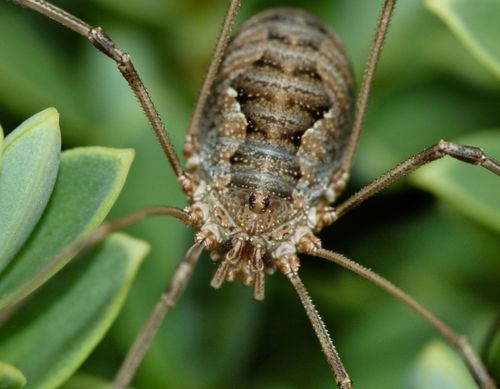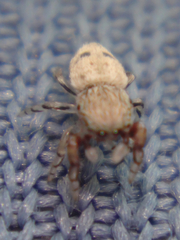Harvestman
Phalangium opilio
Arachnida Phalangium opilio, commonly known as the harvestman or "opilión" in the local Comunidad Valenciana dialect, belongs to the order Opiliones. Despite often being mistaken for spiders, they are a distinct group with unique characteristics that set them apart from true spiders.
Characteristics:
- Appearance: Phalangium opilio has a small, rounded body with extremely long, slender legs. Their body is typically grayish or brownish, providing excellent camouflage among foliage.
- Body Structure: Unlike spiders, their body segments appear fused into a single oval shape, lacking the clear separation between the cephalothorax and abdomen.
- Eyes: These creatures possess a single pair of eyes mounted on a small raised turret on their body.
- Diet: They are omnivorous, feeding on small insects, plant matter, and even fungi.
Habitat:
- Phalangium opilio is widely distributed and commonly found in diverse habitats such as forests, grasslands, and gardens. They thrive in moist environments and are also frequently encountered in human dwellings.
Behavior:
- These arachnids are known for their characteristic behavior of clustering together in large groups, especially during cooler months.
- While they do not possess venom or silk glands like spiders, their primary defense mechanism is the exudation of a pungent fluid from specialized glands to ward off predators.
Overall, Phalangium opilio plays an essential role in the ecosystem by controlling insect populations and contributing to the decomposition process. They are a fascinating part of the biodiversity in Comunidad Valenciana, adding to the region's rich tapestry of flora and fauna.







